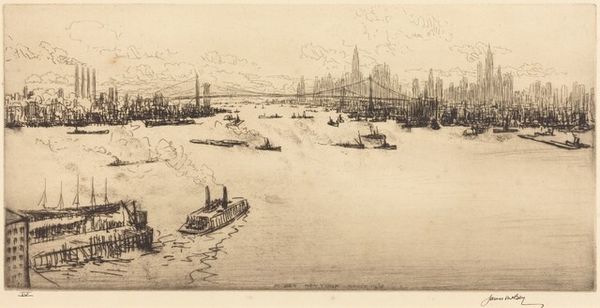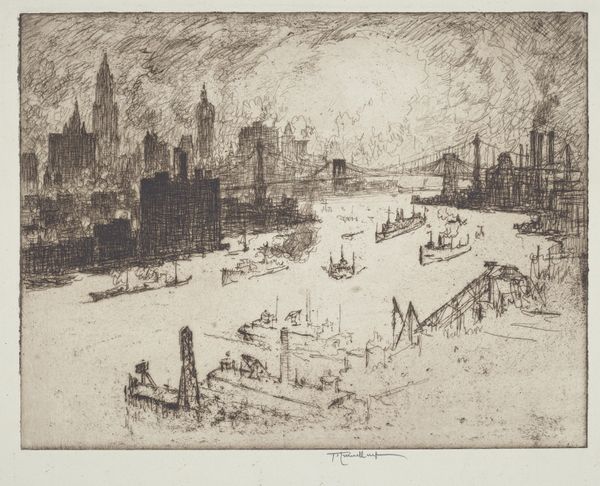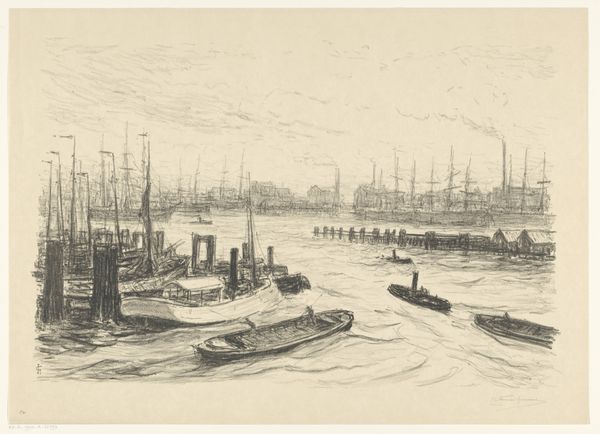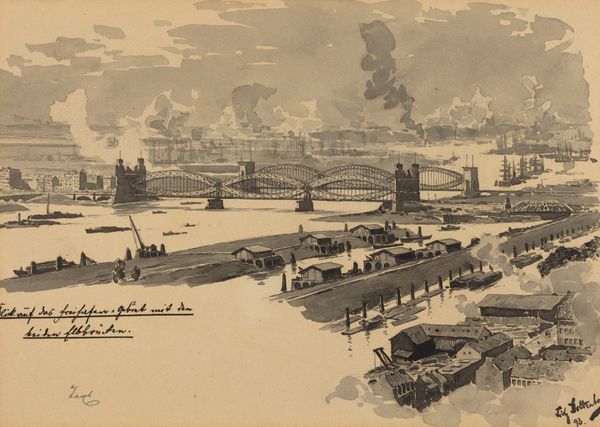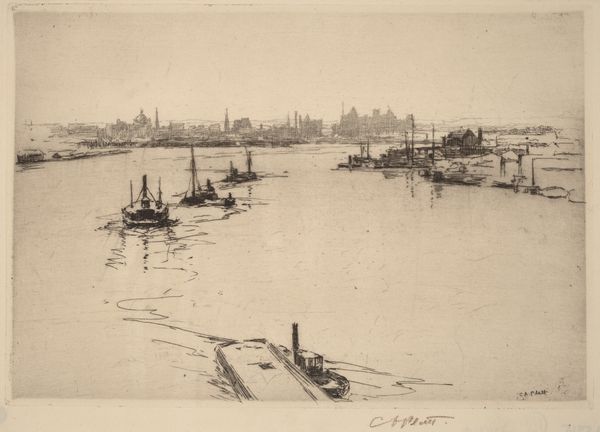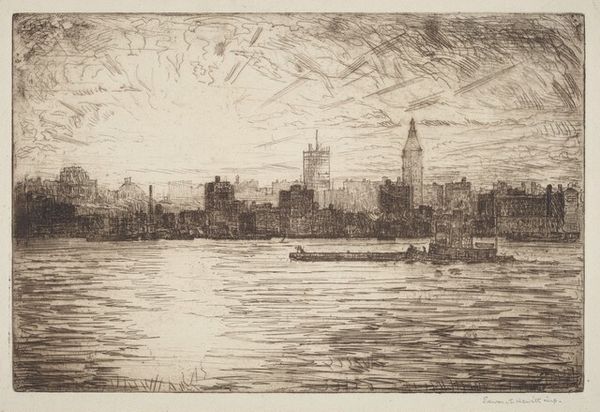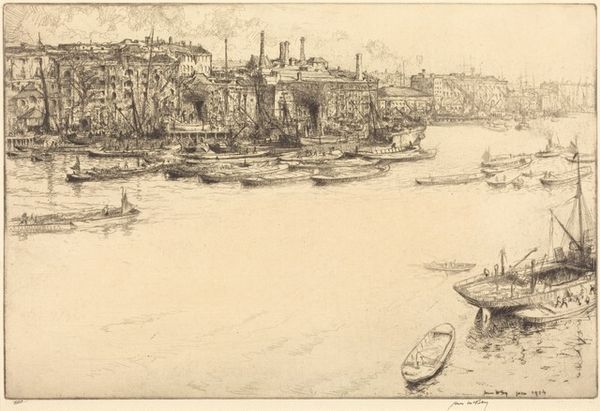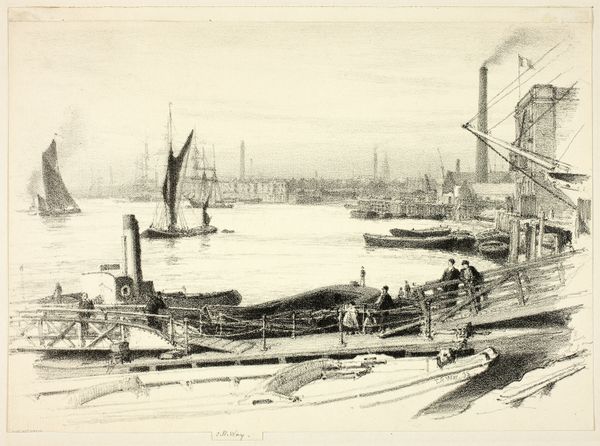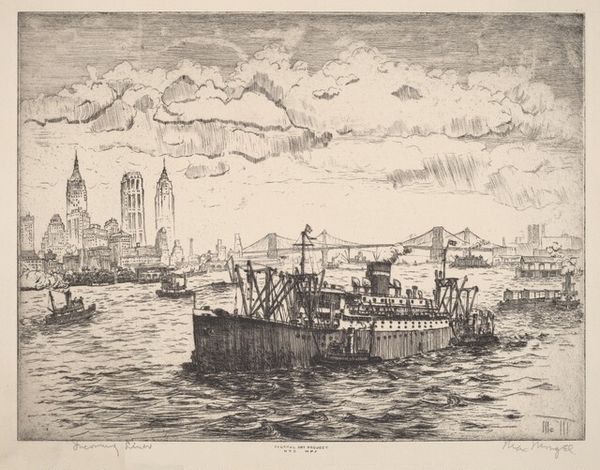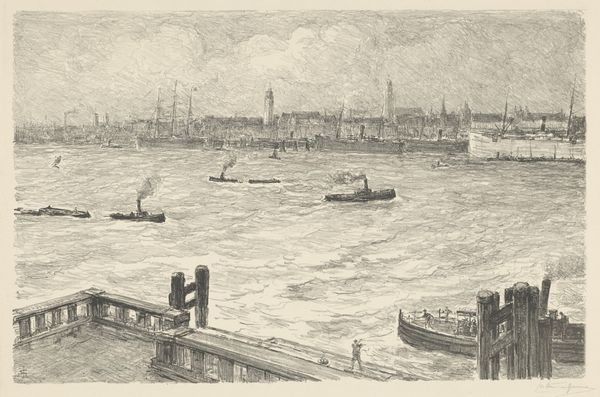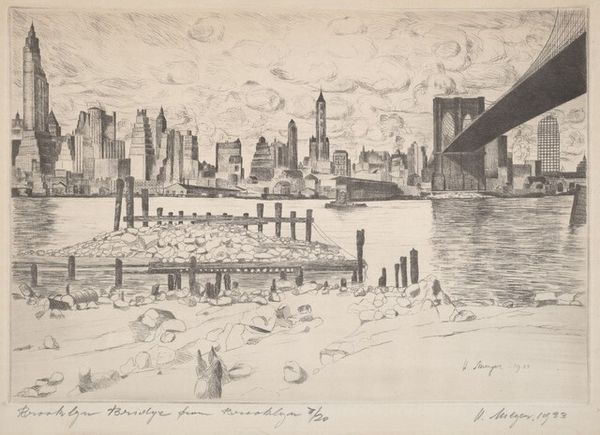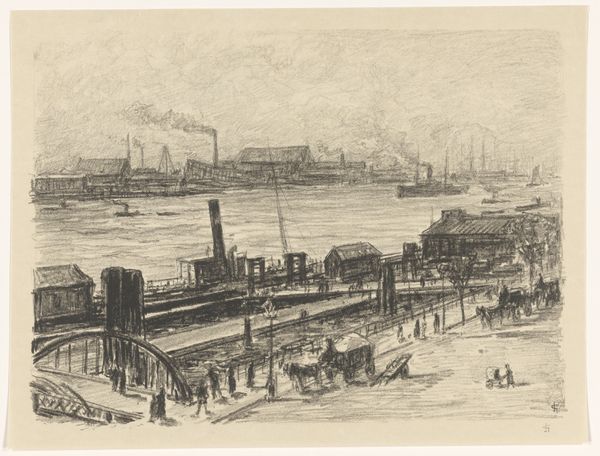
drawing, print, etching, ink
#
drawing
# print
#
etching
#
landscape
#
ink
#
cityscape
#
realism
Copyright: National Gallery of Art: CC0 1.0
Curator: Immediately I'm struck by how industrious it all looks. There’s such a hive of activity depicted here! Editor: Indeed. What you're observing there is James McBey's "Manhattan," an etching rendered in 1930. Curator: The density of marks certainly evokes the gritty atmosphere. It's almost overwhelming. One can almost smell the coal smoke and the salt water. And the composition directs our view from the factories in the foreground over to the developing towers on the horizon. Editor: Considering its context is important. 1930, right after the crash of 1929. This image shows how cities projected an image of industry and enterprise even while many faced severe material hardship. The etching process itself, the labor of incising that image into a copper plate… Curator: Ah, so the materiality resonates directly with the subject. It reflects a sort of manufacturing lineage, where one material impresses itself upon another to multiply the image. Tell me more about McBey himself. Editor: He was a very successful printmaker, known for these kinds of evocative cityscapes. And he made this work at a very specific historical juncture—before the full effects of the Depression set in, really celebrating American industriousness. The placement of bridges reaching towards distant lands might symbolize international commerce as well as a connection of city and the countryside, of producers with markets. Curator: That etching technique definitely lends itself to capturing the granularity of it all. You really sense the textures, the layers of progress piled atop older systems. There’s this relentless energy depicted—as if even the air is working hard to accommodate so much building! It’s almost like it transcends Realism to capture the spirit of the age. Editor: A spirit deliberately projected. Don't forget the art market shaping this idealized vision of progress. The distribution of such images played a role in myth-making and selling a certain aspirational narrative, a particularly resilient image, perhaps necessary to buoy up a troubled economy. Curator: It's intriguing to view McBey’s method now. The etching becomes both artwork and historical document of labor and aspirations in a period of profound transformation. Editor: I see "Manhattan" now with fresh eyes: as both a work of artistry, a moment of visual experience, but equally as a reflection of powerful ideologies in public life.
Comments
No comments
Be the first to comment and join the conversation on the ultimate creative platform.
